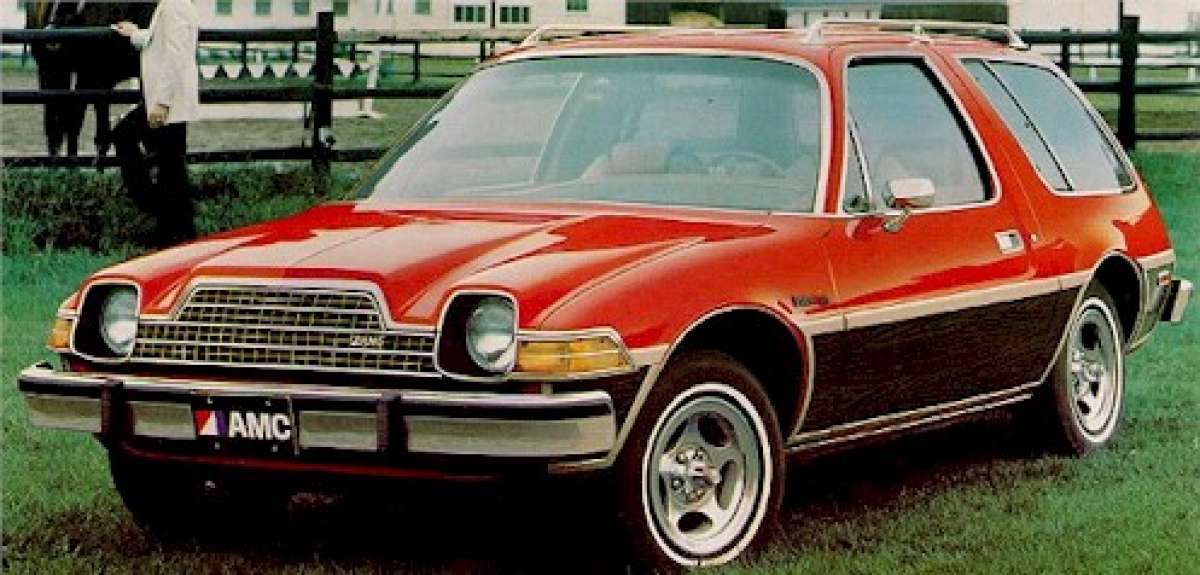A recent appeals court decision, first reported in Detroit News, upholding the new Corporate Average Fuel Economy (CAFE) standard, means a stricter set of fuel economy rules are now in place. The first time this happened, it was the 1970s and it resulted in models whose names were legendary squandering their infamy on choked down excuses for scrap metal or, worse, became re-badged foreign imports.
The 1970s were an odd time in American history. It was a time that saw the hippies emerge from counter-culture into disco dweebs and the muscular pony give way to the limp noodle. When the newly-minted Environmental Protection Agency's CAFE standards began in 1975, American automakers rushed to comply with the strict rules meant to get us off foreign oil imports and force fuel efficiency into a culture that, up to that point, had only rarely considered it.
To meet requirements, the Detroit 3 all downsized in a big way, compromising everything in the name of compliance. These are the automotive zombies created during that time.
1973 Datsun B210
We start the list with an import car that set the stage for the atrocities to come. The B210 had two things going for it: the OPEC gasoline shortage and a cheap price tag. Everything about this car was horrible. Its chief attribute was its ability to rust in even the driest of environments thanks to the paper-thin metal that made up its bodywork. Spilling coffee on the floor virtually guaranteed a hole in the pan by midday.
1975 AMC Pacer
Nearly forty years later, the name "Pacer" still means "loser" in automotive parlance. Possibly the ugliest car ever made, the Flying Fishbowl still appears to be a model for "smart" vehicles today, re-emerging in today's lame duck "efficiency" models just as it did then. Party on, Wayne.
1975 Chevrolet Corvette
Growing into a real sports car with refinement, the Corvette entered a hiccup in its 1975 emissions-regulated edition. Its engine was strangled down to 165 horsepower for its base option and its best offering (the L-82) had only 205 horsepower. Despite this, though, the '75 'Vette was still respectably powerful and exceptionally fast. The fact that it looked cool didn't hurt.
1975 Chevrolet Monza
This car was hit-and-miss with owners. The stock engine was a 78 horsepower 2.3-liter, 4-cylinder sputtering box. The original Wankel Rotary Engine to be showcased in this car was (rightfully) scrapped at the last minute.
1975 Mercury Bobcat
While the Pinto upon which the Bobcat was based had its issues, the car was at least doing exactly what it was intended to do: be cheap and sell well. The Bobcat, however, took the few good things the Pinto offered and tossed them overboard in favor of being bigger, heavier, and more expensive.
1976 Chevrolet Chevette Scooter
The Chevette was a groundbreaking car for General Motors, debuting in '76 as the smallest, lightest, and most fuel efficient car the company had ever made for American sales. The cheapest of the model's lineup was the aptly-named "Scooter." This no-frills base model didn't even have a glove box door or a back seat. Let alone refinements like comfort or drive-ability. Less than 10,000 of these "so low end, even Commies won't drive 'em" models were sold.
1976 Dodge Aspen
Also sold as the Plymouth Volare, this car debuted in 1976 and was discontinued only four years later. Motor Trend shot itself in the foot naming this the Car of the Year in 1976, since subsequent years found "Aspen" to become synonymous with "recall." One of the most-recalled cars of all time, the Dodge and Plymouth models sold very well (over 450,000 in 1976 alone), but cost Chrysler dearly in the years following as recall after recall brought millions in losses.
1978 Dodge Challenger
After a hiatus from the powerful Challenger name, the pony car was re-introduced in 1978 as an imported and re-branded Mitsubishi Galant. The name once synonymous with "Mopar power" was cheapened and sold on a dimly lit street corner for a few bucks. From 440 horsepower in the 1970 R/T the Challenger hobbled to 105 horsepower in its best 1976 2.6-liter offering. All it was missing was cheap makeup and torn nylons.
1979 Fiat Strada
Since we began with an import, we'll end with one. Sold in Europe as the Ritmo, the Strada is now known as the car that chased Fiat out of North America. The car actually had little wrong with it and was a solid offering for the compact market, but it was replacing the 128, which had given Fiat a reputation for being an unreliable piece of garbage. Unable to shake this, Fiat left our market and didn't return until the Chrysler bailout of 2008.
There were plenty of other automotive blunders to be had in the 1970s. It was a relative decade, with horrid styling coupling with choking engines to make for some of the most lame duck vehicles ever made. These were replaced by the hair band blah-mobiles of the 1980s, like the ridiculously underpowered Pontiac Trans Am Turbo and its competition, the Camaro Sport with its under-performing Iron Duke.






Comments
Excellent pieces on CAFE.
Permalink
Excellent pieces on CAFE. You know what the best part is about all of this, Pacers and Gremlins are actually being collected now. It proves to show, there is a seat for every behind in our country!
Party on, Garth!
Permalink
In reply to Excellent pieces on CAFE. by Nicolas Zart
Party on, Garth!